33+ Cosmic Horror Movies — Lovecraftian Cinema
Cosmic horror and Lovecraftian movies confront the vast terror of biological life in a cold and vast universe.
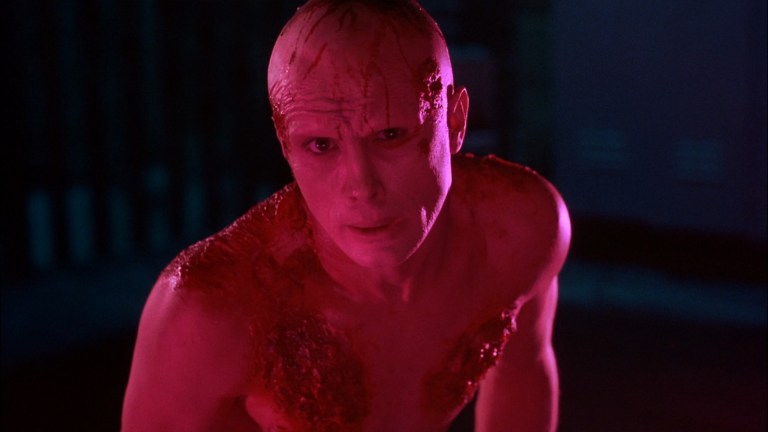
Table of Contents
The writer H. P. Lovecraft is considered the inventor of cosmic horror, a genre of horror storytelling that focuses on cosmic and existential dread. Cosmic horror showcases our small role in the vast cosmos and explores plots around the dangers of scientific discovery, insanity, body horror, psychedelic/weird monsters, and existence itself as the source of horror.
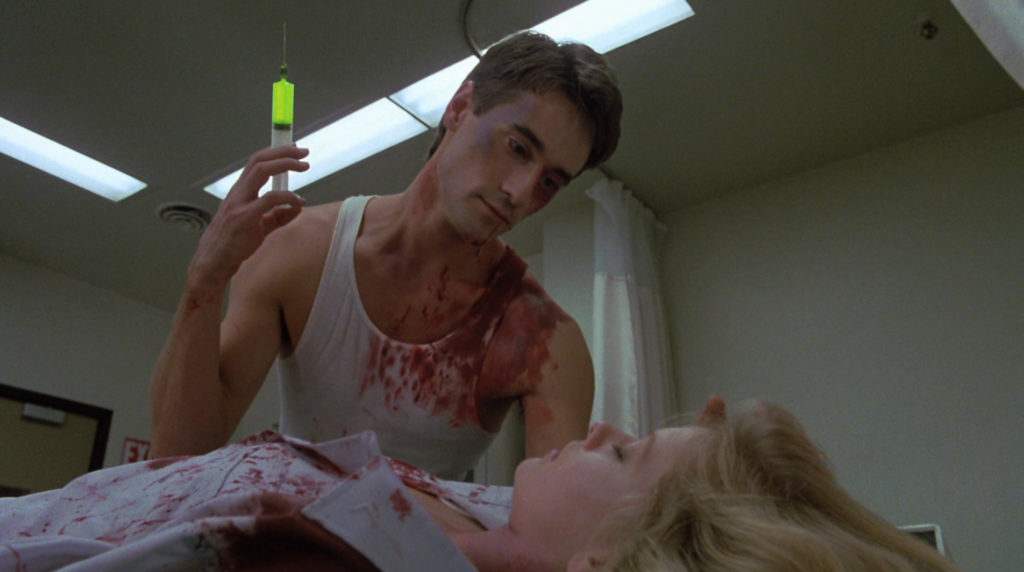
One of the earliest examples of a Lovecraftian film, The Trollenberg Terror (1958), includes all the telltale tropes of a weird story. The scholarly protagonist(s) doomed to an untimely end, an uncanny creature out to kill, and a general sense of terror that when seeking knowledge in the world, all you learn is that you will not survive.
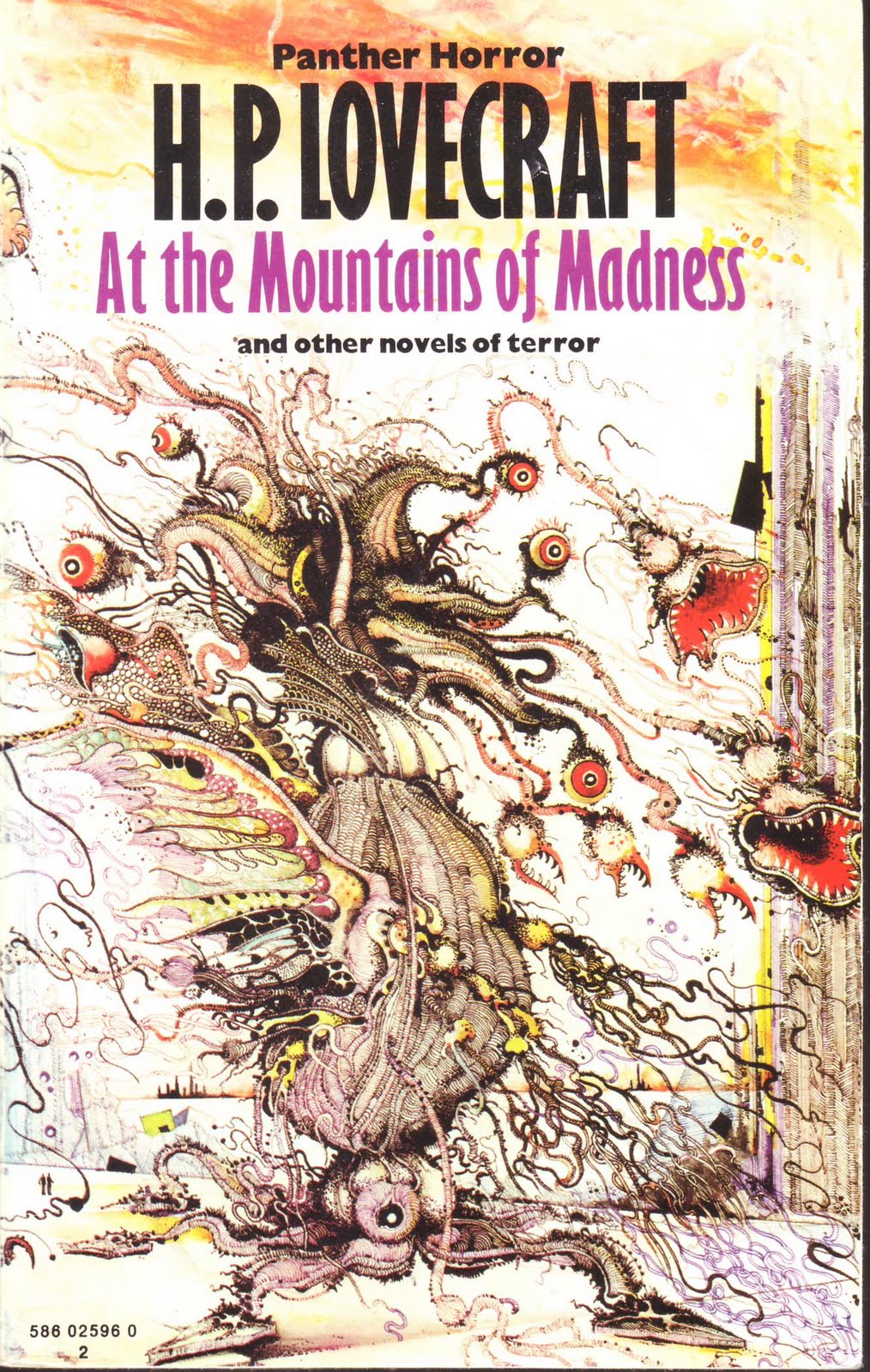
Lovecraftian movies or cosmic horror films have a long tradition in Hollywood and have evolved to represent a genre larger than just the writing of H. P. Lovecraft, encompassing a wide range of far-out-there films.
Cosmic Horror Films from the 1900s
The Haunted Palace (1963)
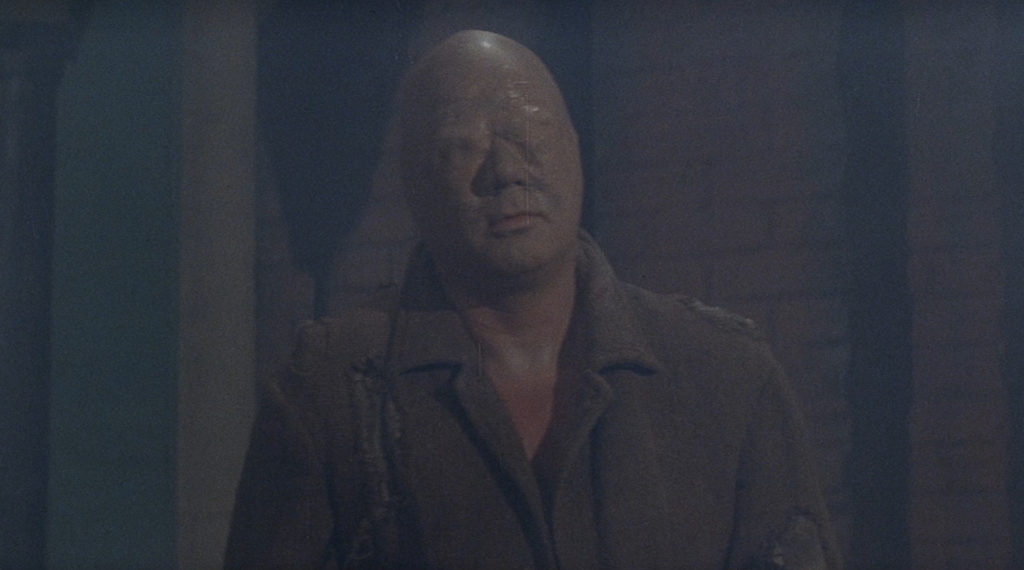
Director Roger Corman’s The Haunted Palace is based on H. P. Lovecraft’s short story, “The Case of Charles Dexter Ward,” in which a dead necromancer has taken over a small village, luring great scholars to his castle to reanimate and torture them for knowledge that will make the necromancer more powerful. He has also included the use of the Necronomicon, a fictional book of magic invented by Lovecraft and heavily featured in his mythos. This is important for Lovecraft fans, as the Necronomicon is the basis of all weird elements of a Lovecraftian tale. This is one of the first times it is represented in cinema. The Necronomicon as a symbol would go on to inspire great horror directors such as Guillermo del Toro and John Carpenter.
X: The Man with the X-Ray Eyes (1963)

Miraculously executed on a $300,000 budget, this independent science-fiction film is a prime example of weird horror: An ambitious Dr. Xavier creates eyedrops which “expand” human vision beyond our range of color and into X-ray and ultraviolet wavelengths. This evokes a slew of consequences surrounding the idea that the doctor has gained a power too great for a single human being to wield. Descending into madness because of a near-paranormal discovery is a classic theme in Lovecraft’s works. Director Roger Corman distinguishes himself with his inventive special effects to create the visually rich “inhuman visions” that Dr. Xavier suffers throughout the film.
The Dunwich Horror (1970)
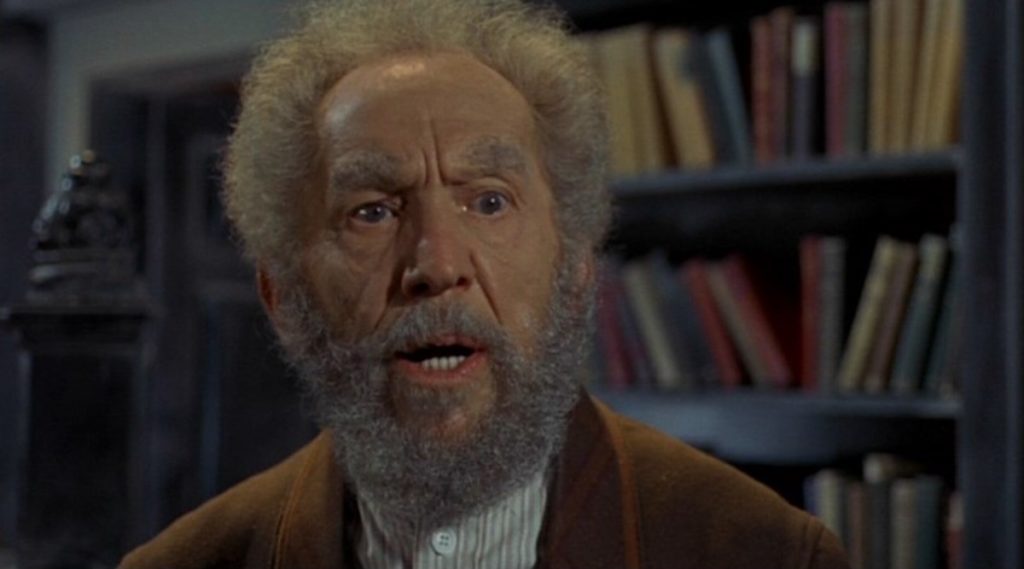
The Dunwich Horror is a direct adaptation of H. P. Lovecraft’s short horror story by the same name. Presenting itself with bold, psychedelic imagery, Daniel Haller’s film pays a loving homage to the surrealist monsters that dominate the Lovecraftian universe. Critic Rob Craig claims it “may be, ironically, one of the most overall successful adaptations of a Lovecraft source work ever committed to film.” It includes the Necronomicon and the gothic setting of Arkham, Massachusetts (the same setting of The Haunted Palace). The movie’s atmosphere is carefully built on the contrast between ornate late-60s-era homes and a dreamlike, slow-panning representation of the disembodied energy that terrorizes the protagonists.
Messiah Of Evil (1973)

Lovecraftian horror films often include themes of paranormal religiosity. Filmmakers Willard Hyuck and Gloria Katz take us through main character Arletty’s journey to reconnect with her estranged artist father at the artist’s colony of Point Dume. Arletty discovers that the town is a front for a cult that waits for a cosmic event called the “blood moon” and worships a mysterious figure called “the dark stranger,” who is a cannibal-turned-vampire with loose connections to the Donner Party. From a cannibal horde feasting on someone in a grocery store, to the homogenous presentation of the cult worshippers in suits and ties, Messiah of Evil uses its surrealist imagery to make an observation about cult-like American consumerism.
Alien (1979)
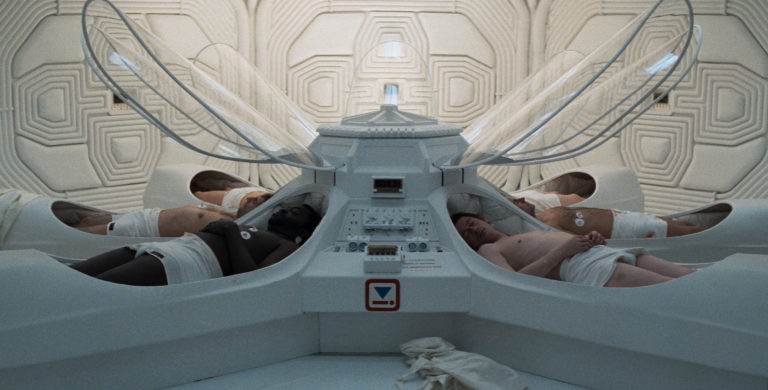
No doubt you’ve heard of this seminal cosmic horror story. Filmmakers in the late 70s reached out into space to ask the question, “What else is out there?” The answer was typically either “ecological threat” or “an international government conspiracy to replace our rapidly expiring fears of communism.” Alien, directed by science-fiction golden boy Ridley Scott, cleverly belongs to both categories. Scott uses wide-panning shots to slow down the audience’s perception of time in the first half of the film, which builds an atmosphere of dread and tension reminiscent of H. P. Lovecraft’s At the Mountains of Madness. From the moment our crew steps onto the second ship, the film becomes a claustrophobic haunt.
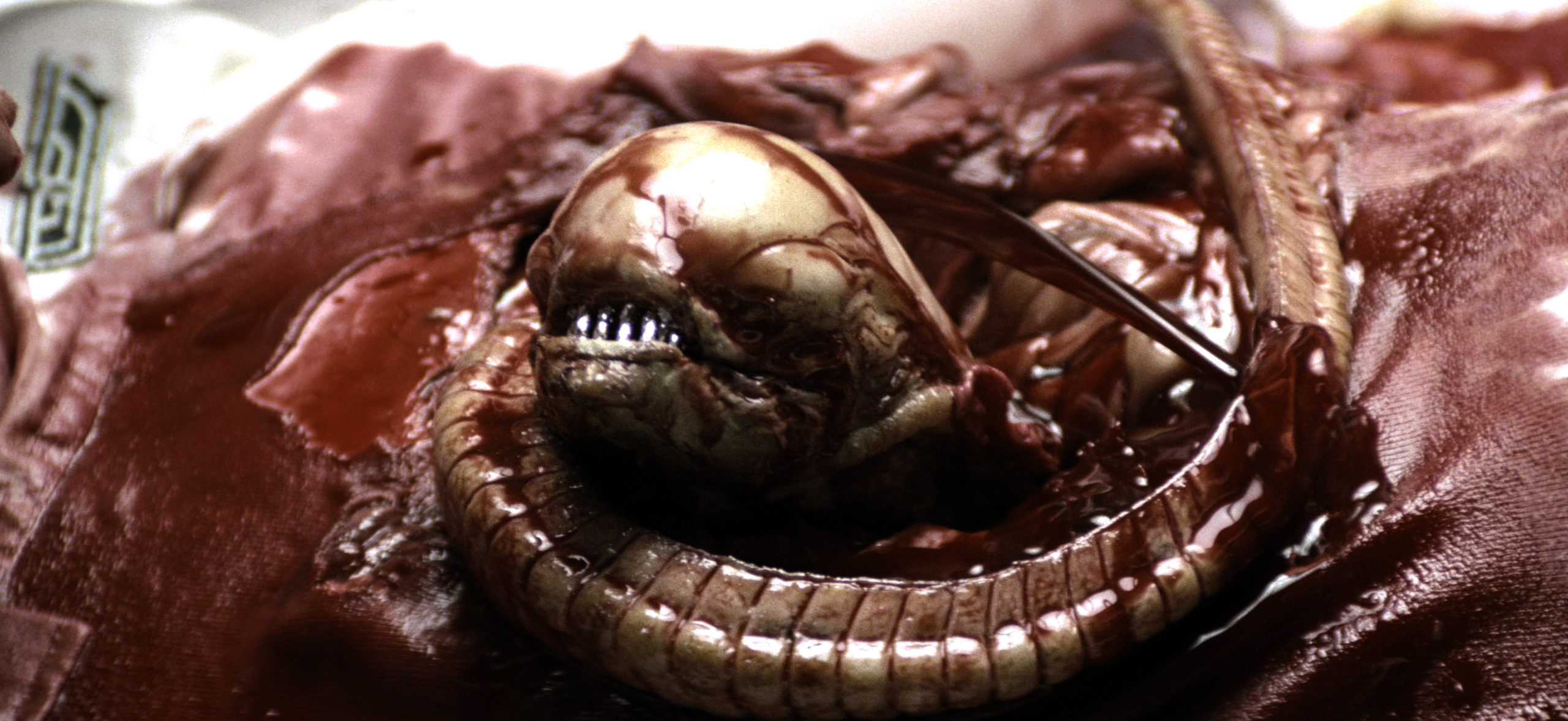
There is only one well-placed jump scare about 75 minutes into the movie, which introduces the iconic “chest-bursting” scene. This masterful use of body horror has been replicated and referenced in dozens of science-fiction movies since. This film blew open the cosmic horror genre and brought to the public the very Lovecraftian notion that in this vast, unknowable universe, there are unspeakable horrors only waiting to be discovered.
City of the Living Dead (1980)
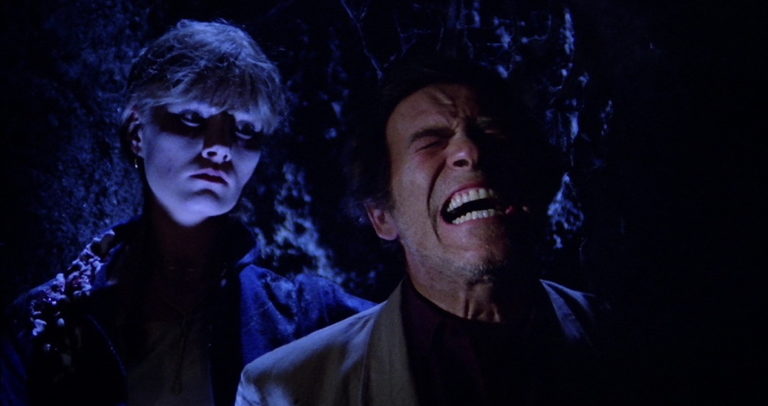
Lucio Fulci wrote and directed this supernatural Italian horror film as a long-time fan of H. P. Lovecraft’s works. In the perpetual sense of menace and the erratic surrealism lives his dedication to setting a truly Lovecraftian atmosphere. A priest inadvertently opens the gates of hell when he commits suicide through hanging. The film has had a long history of censorship, often cropping out gory scenes to be approved for release in certain countries. Called a “necrophile’s delight,” the movie pushes the boundaries of the body horror subgenre and to many, it distracts from what was otherwise a high-concept exploration of what happens when someone good does something horrible.
The Beyond (1981)
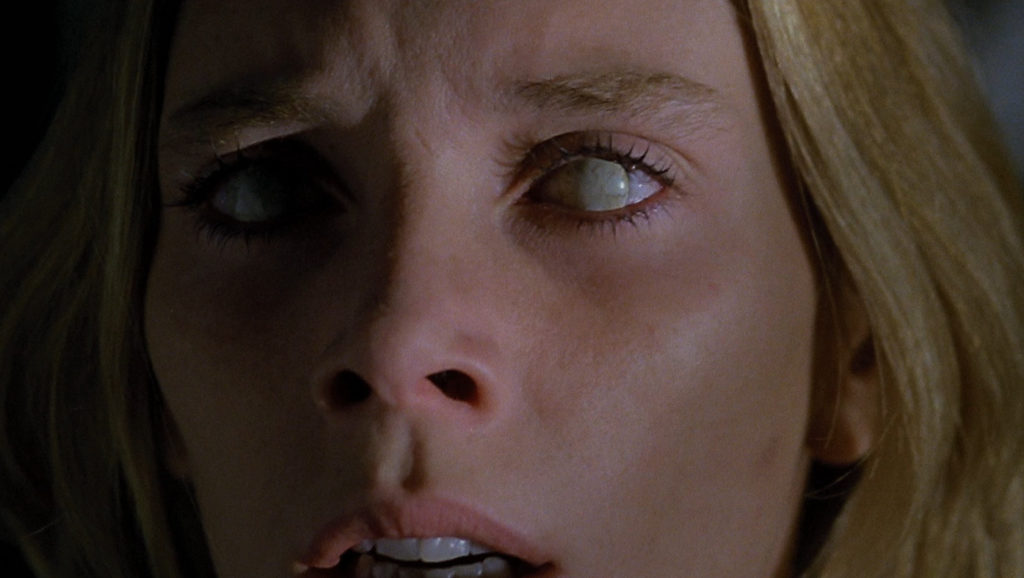
Director Lucio Fulci continues his “Gates of Hell” Trilogy with the vastly matured second installment, The Beyond. Building upon the lore of City of the Living Dead, Fulci’s Lovecraftian mythos explores the possibility that the gates of hell can be opened by human folly. His signature jarring imagery has kept critics arguing about whether or not his narrative obscurity is intentional. The Beyond has rallied a cult following regardless. The plot, which involves a demonic painting as a portal to hell and ends with the main characters trapped in said painting, is a true exploration of one of the most pervasive themes in horror: humanity’s impressive ability to shoot itself in the foot.
The Thing (1982)
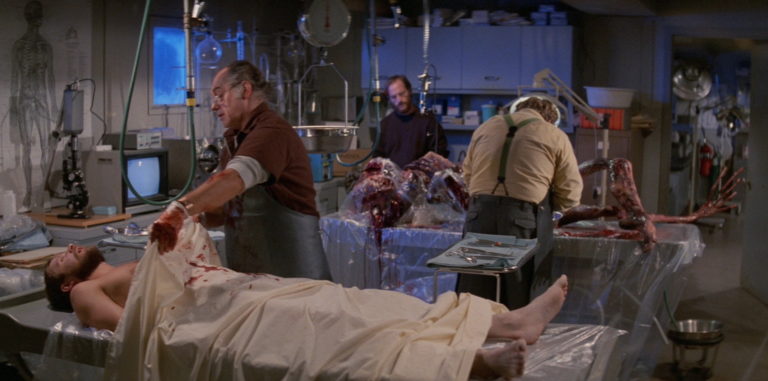
John Carpenter singlehandedly redirected the 1980s cinematic landscape toward cosmic horror with this film. The titular creature’s nebulous shape is a classic Lovecraftian trope: Primordial beings from other worlds somewhere in the vast cosmos see us as unimportant and ultimately disposable. Nihilist undertones imply that monsters who emerge from Antarctica’s lifeless winter landscape will ruthlessly consume us if disturbed. The main character edges towards losing his sanity as a consequence of looking upon this monster, which, in Lovecraft’s work, is a typical consequence of acquiring impossible knowledge.
Evil Dead (1983)
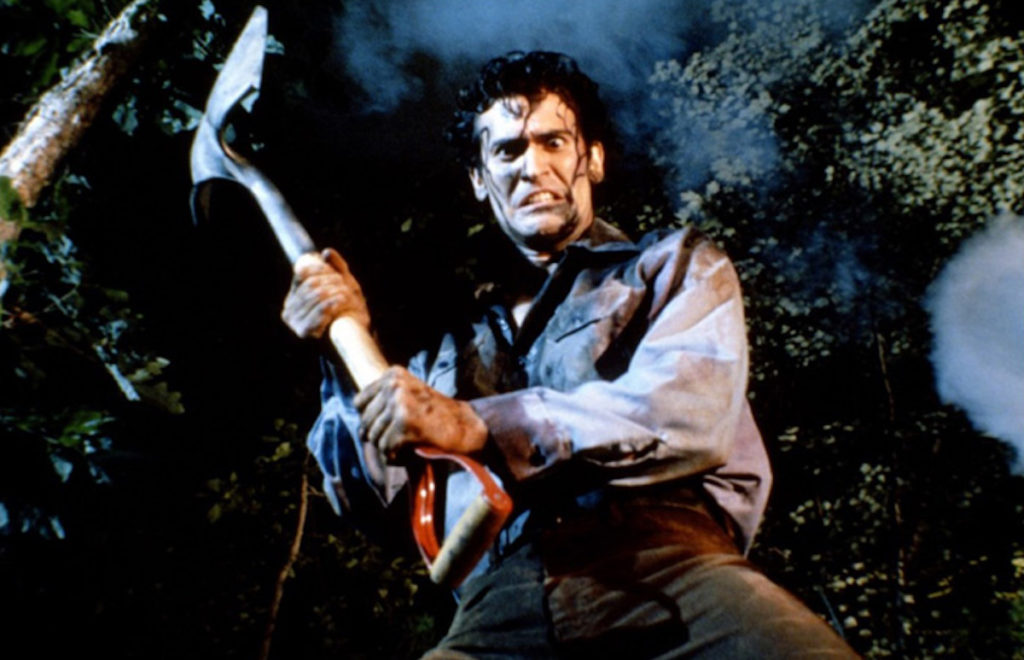
A demonic book traps a group of vacationing coeds in a rustic cabin in the woods, attempting to possess each of them one by one until all have committed heinous acts of violence against each other in this genre-defining classic. Evil Dead set itself apart from other terror tales of the era through celebrity endorsements—master horror author Stephen King attended the film’s screening at the 1982 Cannes Film Festival and called it “one of the most ferociously original films” he’d ever seen. Its surprisingly dark tone is enhanced by creative camera work and high-quality gore. One of the biggest cult trilogies in history derives its central antagonist, the evil book, from H. P. Lovecraft’s Necronomicon.
The Re-Animator (1985)
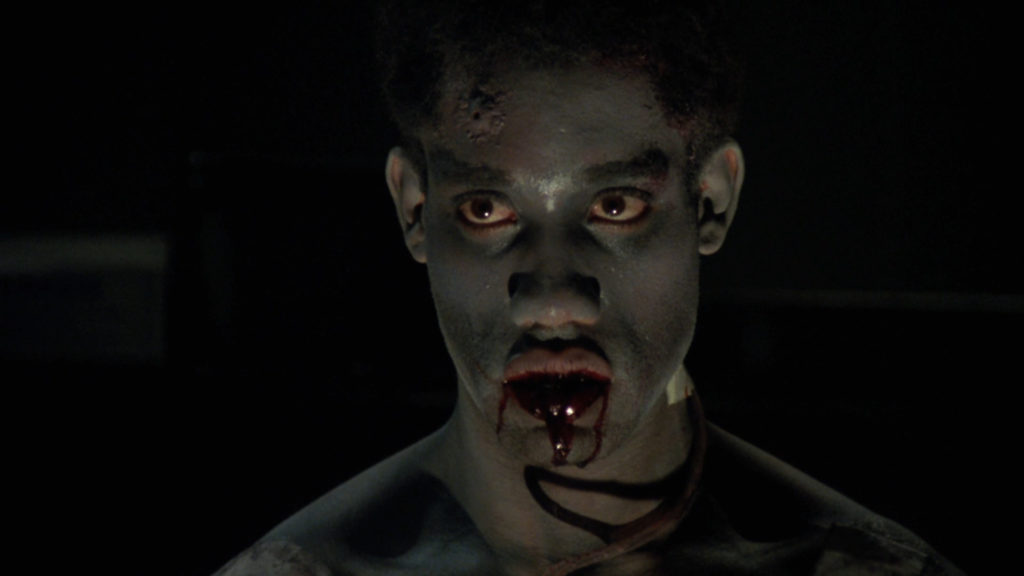
Loosely based on the Lovecraft short story “Herbert West—Reanimator,” this film gets its wacky theatrics from filmmaker Stuart Gordon’s original idea to produce a stage play with the material. A medical student develops a serum that reanimates dead bodies. The movie loyally reproduces the exploitativeness of Lovecraft’s original short story, though updated with a tonality of American cultural waste and dark sexual comedy.
From Beyond (1986)
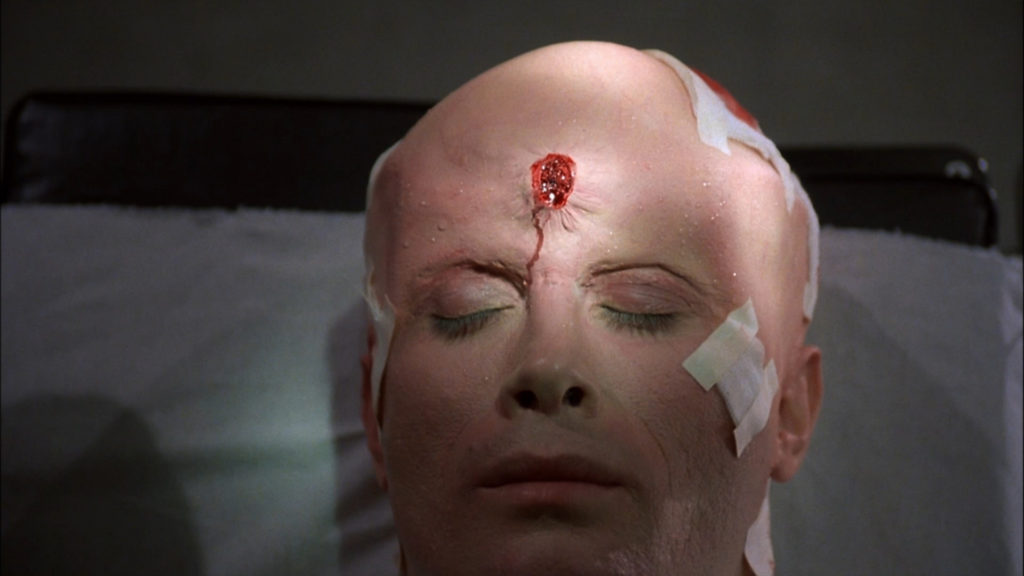
Another Lovecraft adaption from the 80s delivers an onslaught of body horror and the familiar mad-scientist-gone-too-far trope. Based on the short story by the same name, From Beyond is Stuart Gordon’s second Lovecraftian movie. He collaborated with writers Jeffrey Combs and Barbara Crampton, who also worked with him to produce Re-Animator. This film shares the same central plot with X: The Man With The X-Ray Eyes (1963), with the key difference being that the scientists who discover a way to enhance human vision accidentally access a parallel dimension where monsters kidnap and transform the scientists, only to unleash them back into our world. This quickly recategorizes this movie into the cosmic horror genre by featuring Lovecraftian creatures with a godlike ability to transform human life and a godlike indifference to doing so.
Hellraiser (1987)
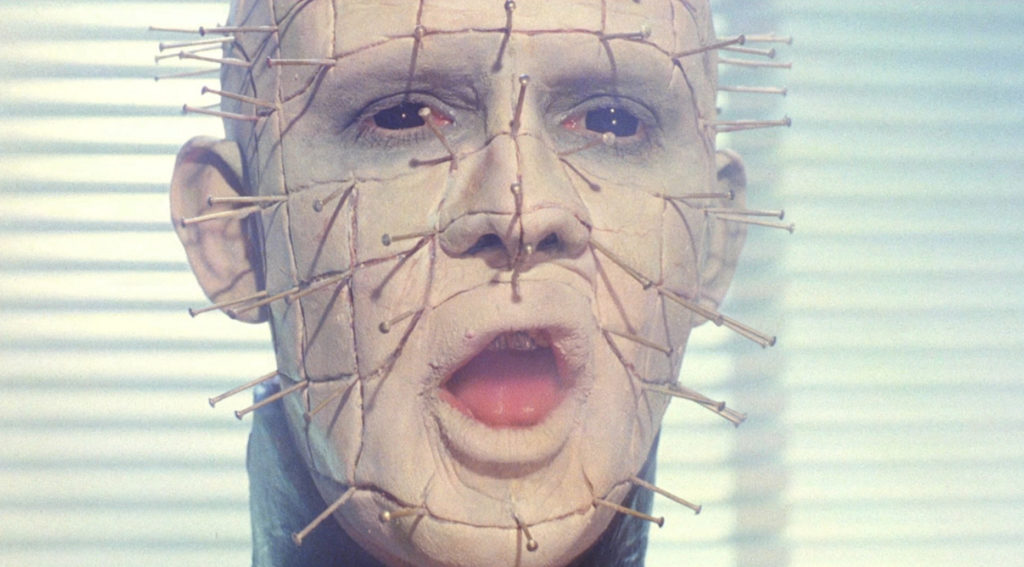
Written and directed by Clive Barker as an adaptation of his novella The Hellbound Heart, Hellraiser is a uniquely visual record of one horror author influencing another. This movie features an impressive cast of extra-dimensional beings called Cenobites who appear as grotesque explorers of the most extreme forms of sensation. In search of experiences beyond anything he’d been exposed to before, Frank Cotton summons the Cenobites through a mysterious puzzle box, only to be torn apart and taken to another dimension. Frank finds a way to escape back to our dimension, but his plan involves lots of blood and death, and the Cenobites are not ready to let him go.
Hellraiser manages to bring back Lovecraft’s often-overlooked Gothic style with a chilling score written by Christopher Young. Cosmic, inter-dimensional demons dominate this era of cinema as filmmakers continue to create new films within the genre. Hellraiser birthed the now-iconic monster named Pinhead, who is a central figure in the visual archive of the horror genre.
Prince of Darkness (1987)
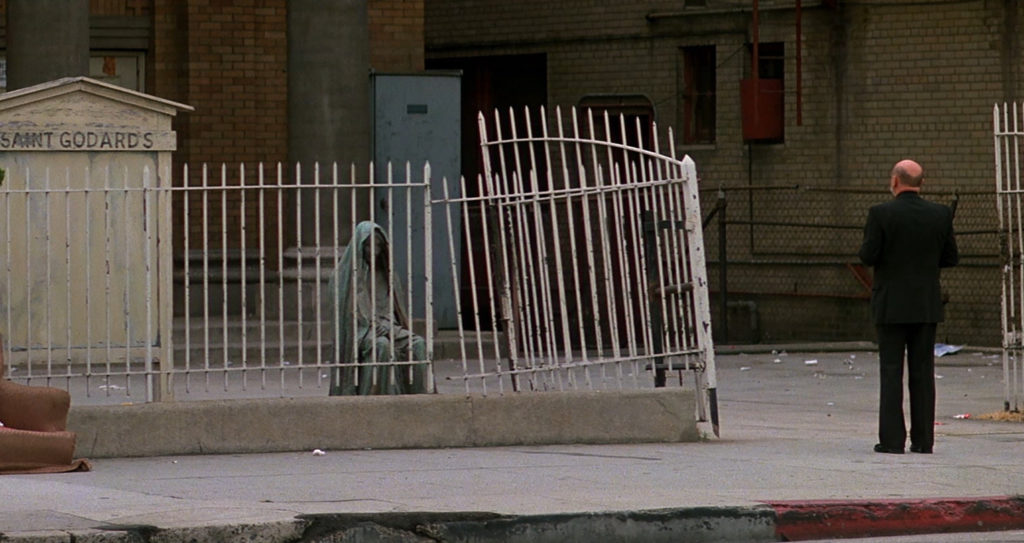
Director John Carpenter returns to this list of cosmic and Lovecraftian horror with this film. Part of Carpenter’s “Apocalypse Trilogy,” of which the first installment was The Thing (1982), this movie follows a group of quantum physics students who visit a monastery to investigate an ancient cylinder of (possibly sentient) liquid which the Church believes is the physical embodiment of Satan. The true answers are much more complicated, and the film portrays a fascinating blending of science and religion along with some great “demonic” possessions. The film’s outlandish premise is made flesh by a cast of well-rounded characters and whip-smart camera angles which are central to Carpenter’s style. With an altogether cool blend of religious choir hymns and 80s synth score as a backdrop, the film has gained a cult following.
The Unnamable (1988)

The Unnamable is a direct Lovecraft adaption of a short story by the same name. While poorly received by audiences and critics, the film is an important stepping stone in the subgenre of cabin horror. Horror fans might recognize the villain father-daughter duo Joshua and Alyda Winthrop as two who would later appear in the 2011 metafilm The Cabin in the Woods, which notoriously borrows Lovecraftian tropes. The plot is simple: A group of coeds makes the unfortunately fatal decision to stay in a “haunted house.” You may recognize this story from The Evil Dead (1983) as well. Were it not for its Lovecraftian roots, this film may have been relegated to the barrel of pulpy, poorly crafted 1980s dead-teen movies.
The Evil Clergyman (1988)
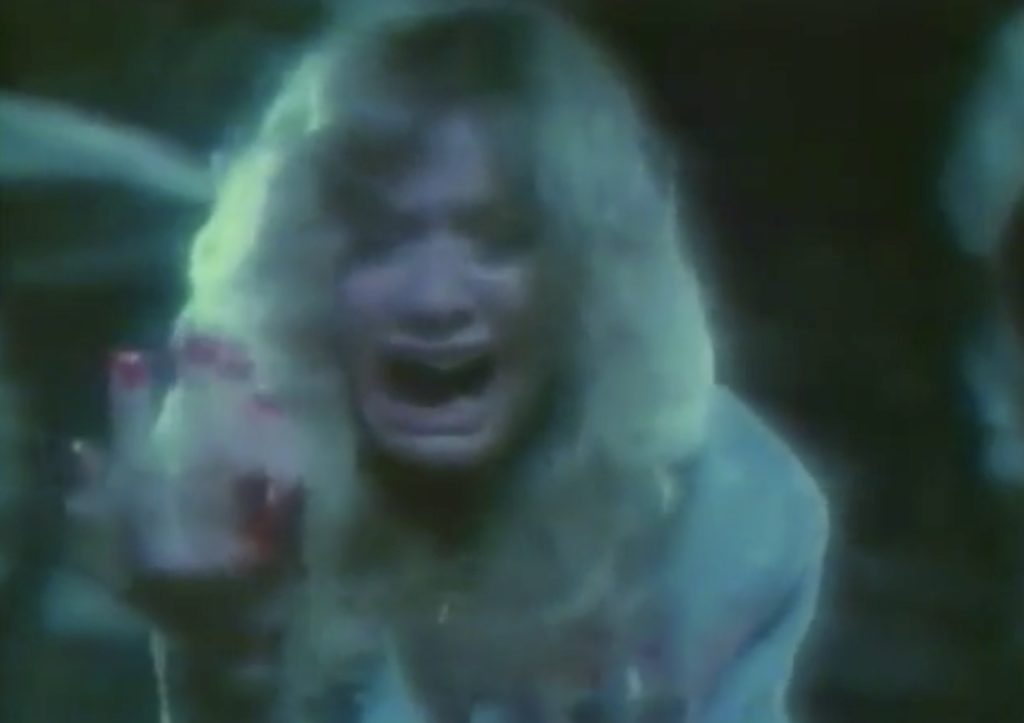
The Evil Clergyman is a film largely lost to time. It was lost in 1988 when the original 35mm print was misplaced. It was initially one segment of a three-part anthology film called Pulse Pounders. In 2011, a VHS tape containing the original film for The Evil Clergyman was found and immediately released. This adaptation of H. P. Lovecraft’s short story by the same name is similar to Re-Animator in tone and campiness. The plot features a priest who frequently experiments on human beings to produce hybrid monsters. Following the priest’s suicide, his former lover visits his home, only to discover that he still walks the earth (though his status as “alive” is debatable), as do his monsters. Featuring a classic 80s horror atmosphere and a bestial rat-man creature, The Evil Clergyman is a worthwhile cause for the die-hard horror fan.
In the Mouth of Madness (1994)
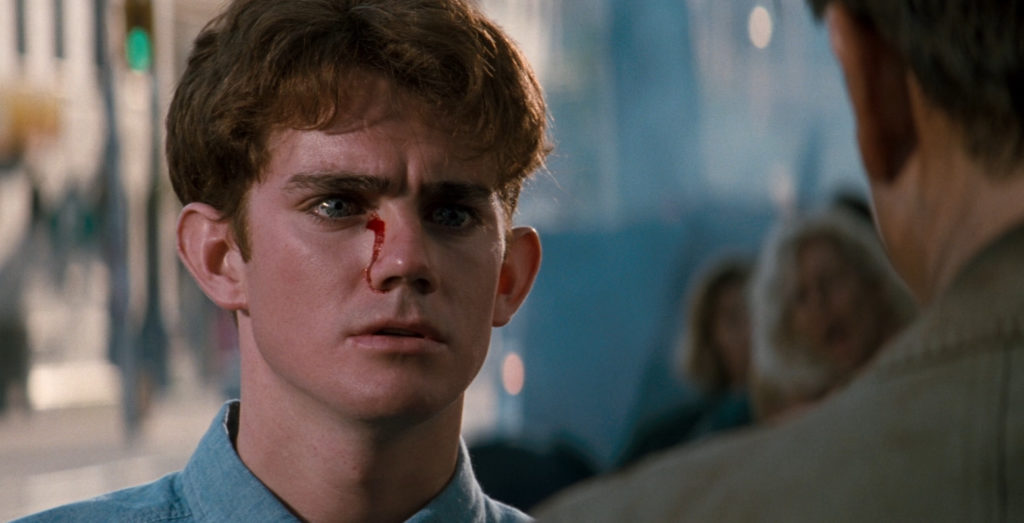
This metafilm by John Carpenter tries to answer the question, “Is there a book out there so scary, it can cause harm to the reader?” Fiction becomes fact as the protagonists discover that a popular fiction book in their world might influence their reality, and vice-versa. As the third installment in the Apocalypse trilogy, which includes The Thing (1982) and Prince of Darkness (1987), In the Mouth of Madness continues Carpenter’s extended love letter to H. P. Lovecraft’s work. It is full of the shocking images and complicated plot lines that define Carpenter as a director. The title is a play on H. P. Lovecraft’s novel At the Mountains of Madness.
Event Horizon (1997)
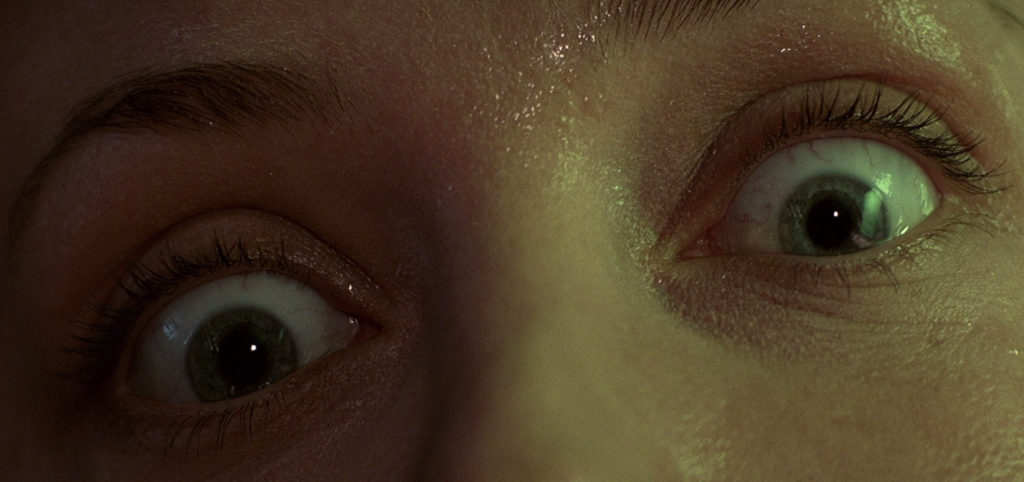
With the tagline “Infinite space, infinite terror,” it’s no wonder Event Horizon is considered a cosmic horror. A rescue mission sent to recover a spaceship named Event Horizon near planet Neptune discovers that even though the crew is found dead, readings indicate that there are life signs on the ship. Or rather, the life signs are the ship. The rescue crew discover recordings from the Event Horizon showing that they conducted one too many experiments and opened a rift in the space-time continuum. The horrors they saw drove them mad, and now the rescue crew might be doomed to the same fate. Laurence Fishburne stars as commanding officer Captain Miller, and Sam Neill plays Dr. Weir, the troubled scientist who invented the gravity drive that doomed the Event Horizon.
Cosmic Horror in the 2000s
Cthulhu (2007)

Lovecraft’s novella The Shadow Over Innsmouth inspired this 2007 film by Dan Gildark. A mysterious warehouse with hundreds of names written on the walls is rediscovered in the memories of a young history professor who has returned to his childhood home. Featuring the first openly queer character in an adaptation of an H. P. Lovecraft work, Cthulhu is a horror film that maintains that cosmic horror atmosphere and sense of existential dread. As the true horrors of this sleepy Pacific town are revealed, one discovers that the true otherworldly horrors are sometimes right here on earth.
The Mist (2007)
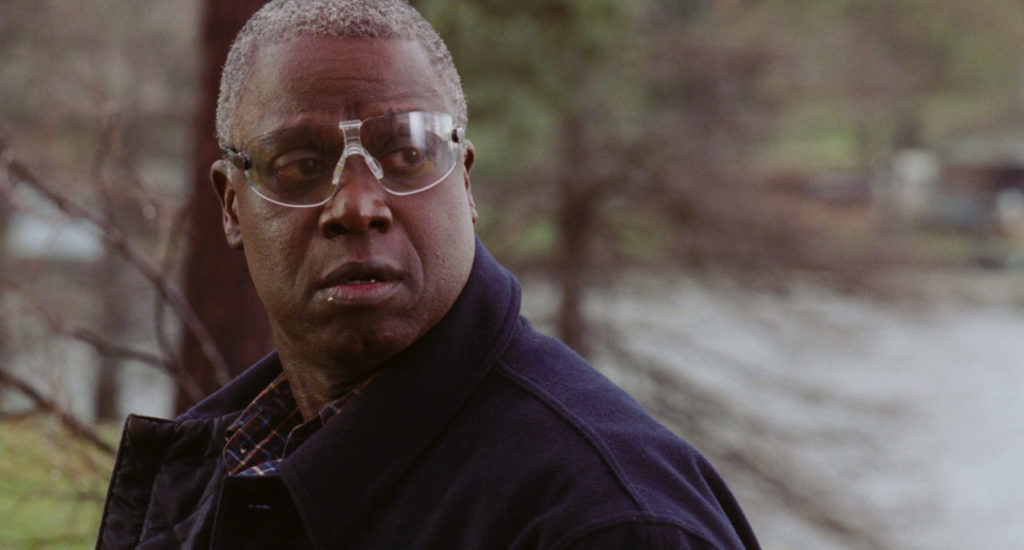
Horror master Stephen King’s novella by the same name inspired this 2007 psychological horror film. The titular “mist” engulfs an unsuspecting town, unleashing from within it a legion of Lovecraftian monsters. Giant insects, cannibal spiders, and unidentifiable building-sized creatures roam the hard-to-see landscape, knocking humankind to the bottom of the food chain. The ending is a true horror of the mind and much darker than the original ending written by King.
The Burrowers (2008)
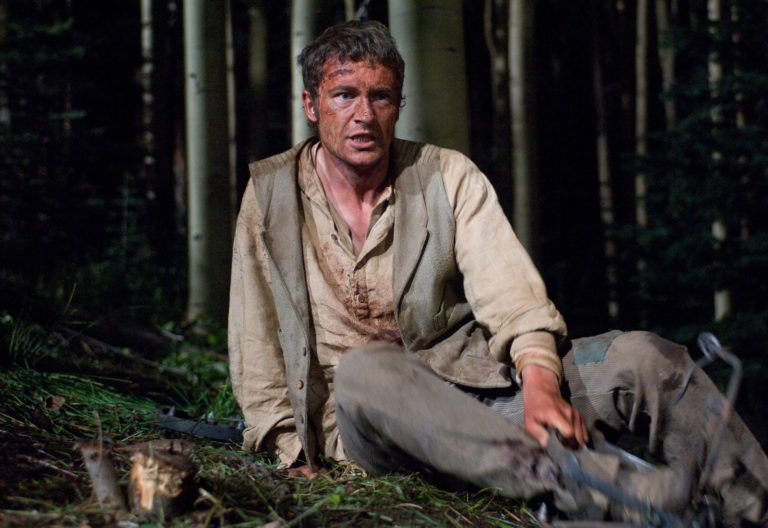
An alternate-universe 1897 Wild West pioneer settlement is plagued by mysterious disappearances and violent deaths. Considered one of the few successful marriages between horror and Western genres, The Burrowers is a unique mythology tale about dark truths as yet unknown to man. As space is our final frontier in the 21st century, the West was just as dark and cosmic for settlers in 1897, shortly after the completion of the first U.S railroads. This film cleverly borrows traditional Western motifs and combines them with Lovecraftian monsters to recreate the vast unknowability of the universe right here on planet Earth.
Pandorum (2009)
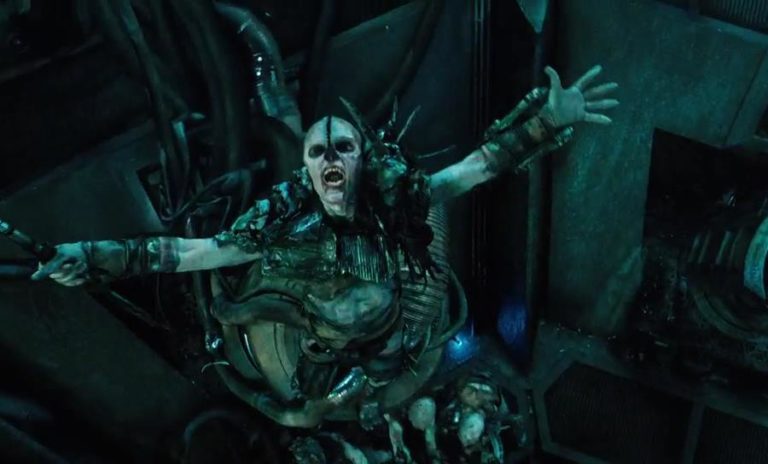
Pandorum is a German-British cosmic horror and survival film directed by Christian Alvart. Dennis Quaid and Ben Foster lead us through the titular experience of “pandorum,” which is a fictional term conceived to describe a psychotic break exclusively experienced by those who have entered deep space. It is triggered by the emotional distress of experiencing the vast cosmos as a singular human being. This interstellar horror offers many of the same plot elements of its contemporaries at the time, though with a much more hopeful ending that human life may flourish on planets other than Earth.
Jug Face (2013)
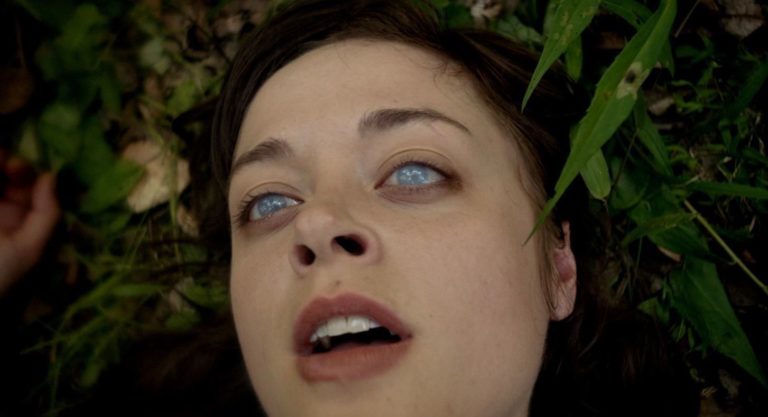
Jug Face follows a cult-like backwoods community that maintains the status quo by occasionally sacrificing one of its members to what they consider an elder god in a pit. In reality, it is some leviathan-like Lovecraftian creature around whom the villagers have created a religion. The movie focuses on the main character’s life and follows her strange connection to the creature through dreams. It is a surreal haunt through the folk-horror subgenre.
Europa Report (2013)
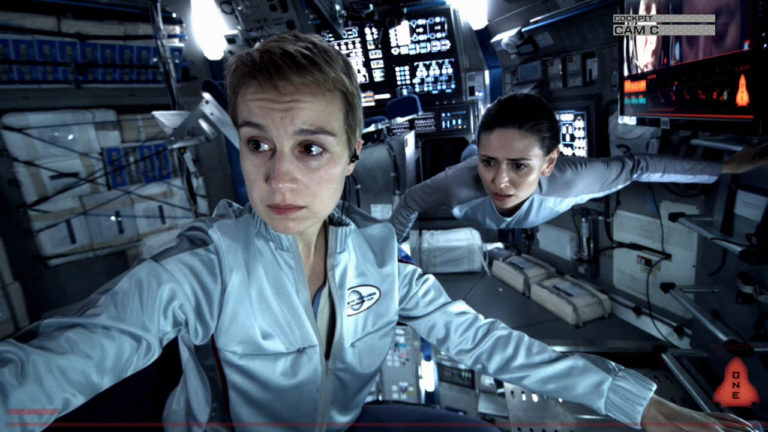
This 2013 science-fiction film directed by Sebastián Cordero follows the first attempt at a manned space expedition to one of Jupiter’s moons. Complicated by the sudden malfunction of all transmission contact with Earth, the crew forges toward a destination completely unknown to mankind. The tentacled, bioluminescent creatures they find waiting for them far exceed what they expected when they embarked. The cosmic fear is tempered smartly by slow, realistic shots of the crew interacting onboard the ship. Europa Report carefully builds atmosphere and authenticity.
Black Mountain Side (2014)

This indie horror thriller is the brainchild of Canadian director Nick Szostakiwskyj. We return to one of H. P. Lovecraft’s favorite otherworldly settings here on Earth: the Arctic north, where a team of archeologists discovers a structure so ancient, it precedes the last Ice Age. This 14,000-year-old structure proceeds to wreak psychological havoc on the team in a series of events reminiscent of both John Carpenter’s The Thing (1982) and H. P. Lovecraft’s At the Mountains of Madness (1931). A fresh combination of arctic thriller and psychological horror, this film cleverly explores the idea that primordial architecture can carry just as much malice as any alien creature.
The Void (2016)
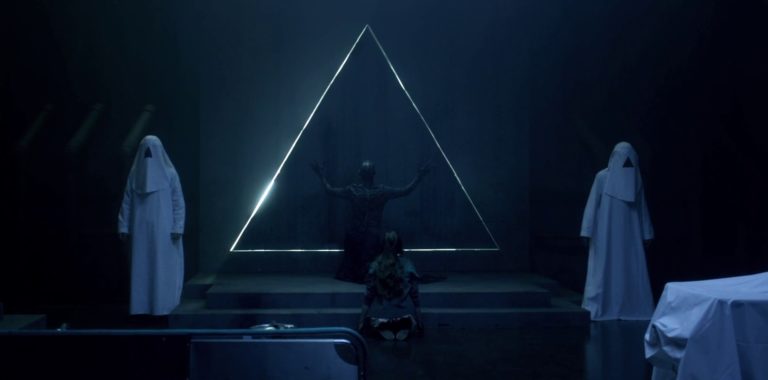
The Void is a Canadian supernatural horror that had humble beginnings as an Indiegogo project which raised $82,510 for the film’s completion. As a modern project, it rehashes a traditional story with modern elements. Hospital patients become trapped in their wards when it is revealed the building is actually the meeting grounds for a cult which worships a glowing triangle on the wall in the morgue. Without any direct answers and without mercy, the film takes us through a series of body-horror mutilations, mysterious hooded creatures, and devastating betrayals. The titular “void” is implied to be a gateway which reverses death’s effects. Therein lies the cosmic horror. Though the film takes place entirely in the hospital and the only visible supernatural elements are of tentacled creatures birthed from human women and the glowing triangle itself, it still gives off a wholly alien vibe that is sure to have you contemplating your existence in the universe.
The Endless (2017)
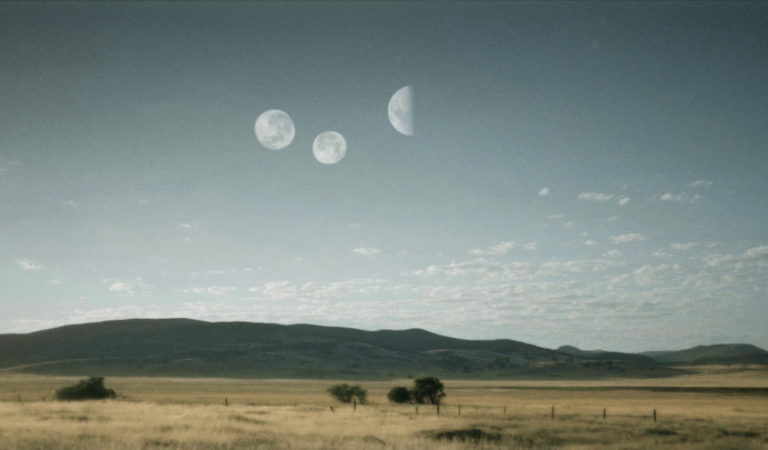
Brothers Benson and Moorhead revisit their former cult home after receiving a mysterious cassette tape in the mail. The movie plods on through complicated emotional and psychological experiences until it suddenly plunges us into the surreal with one arresting image: Some members of the cult yank on the end of a frayed camp rope in an innocent game of tug-of-war, but the other end of the rope shoots straight up into the sky, pulled by an invisible entity. Suddenly, this creepy cult psychological horror transforms into a cosmic science-fiction tale worthy of H. P. Lovecraft’s name. It borrows some directorial influence from David Lynch, Stuart Gordon, and Don Coscarelli.
Annihilation (2018)
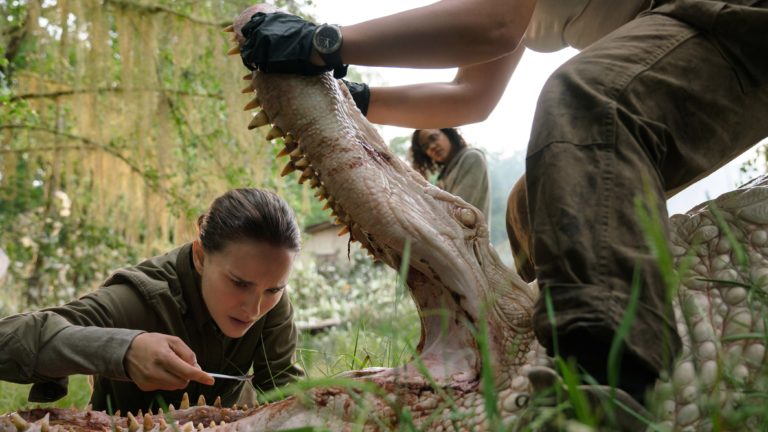
Author Jeff Vandermeer gets his influences from cosmic Lovecraftian tropes. In this 2017 adaptation of his novel by the same name, a ragtag group of explorers is assembled by the U. S. military and sent into an alien-spawned atmosphere cloud that has descended upon the earth called “The Shimmer” to gather biological samples for study. Several teams have entered before and have not returned. This film builds tension and atmosphere by relying on the slow reveal of dedicated, artistic renderings of the awful body horror inflicted upon people who enter The Shimmer and are changed on a biological level. The Earth’s conquest by this insentient alien creature gives a new definition to the term “existential dread” by showing us a predator from outer space who acts more like a cancer than a violent destroyer. In true Lovecraftian fashion, the creature shows us not our weakness, but our insignificance.
The Lighthouse (2019)
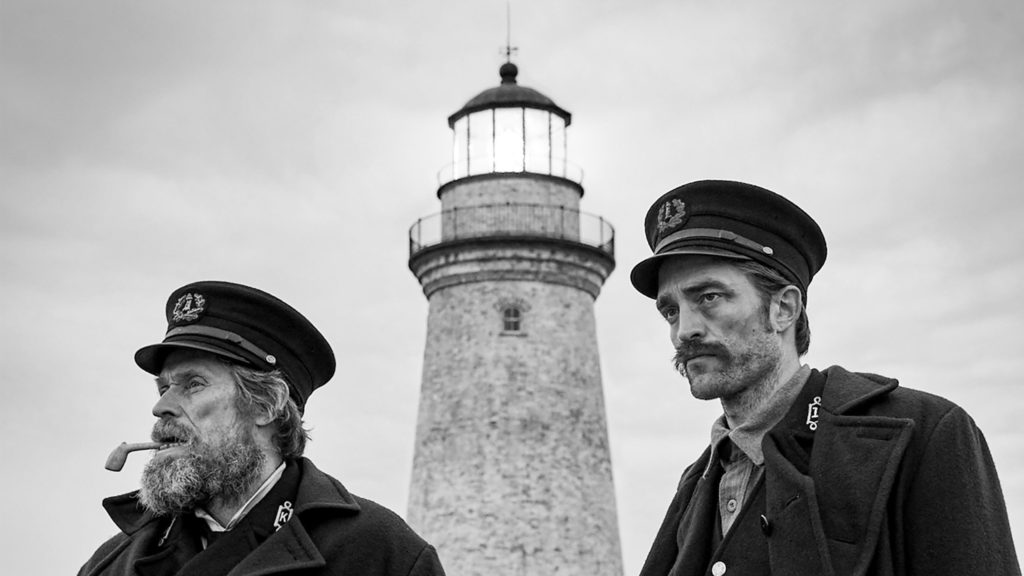
This claustrophobic period piece by director Robert Eggers and his screenwriter brother Max follows two seamen who have taken the isolated job of lighthouse watch shift and are left stranded for longer than they planned after a storm delays their relief ship. Overcome by the trance-like nature of the ocean and one seaman’s obsession with a tentacled creature living atop the lighthouse, things quickly devolve into psychosexual violence and cabin fever. Considered a modern Prometheus or Sisyphus retelling, The Lighthouse embodies cosmic Lovecraftian weirdness through its jaded surreal imagery and vague representations of an otherworldly being. Stars Robert Pattinson and Willem Dafoe deliver memorable performances as the two stranded seamen.
Color Out of Space (2019)
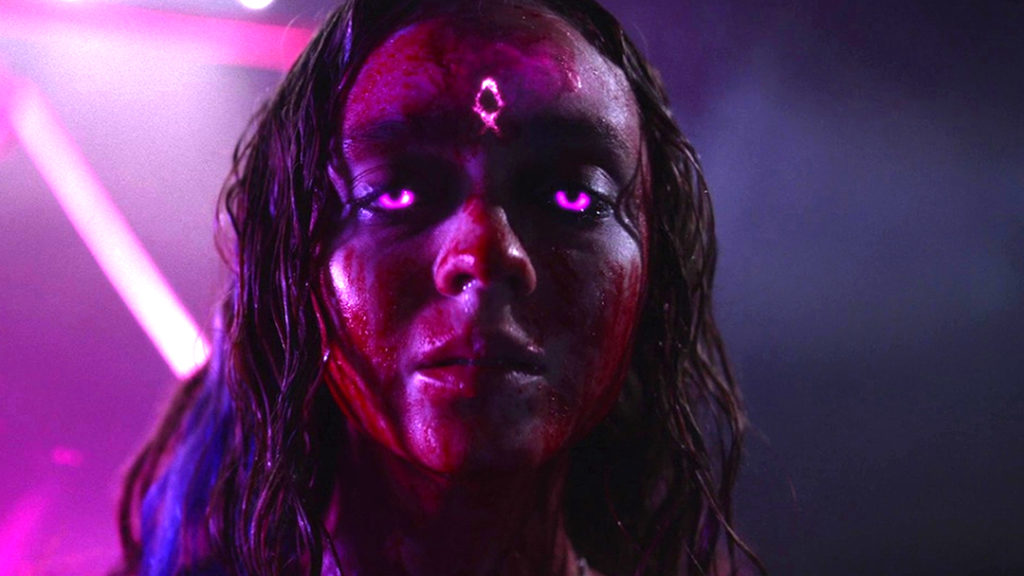
Described as a “science fiction Lovecraftian horror,” Color Out of Space (2019) might be the most modern undertaking of Lovecraftian adaptations by a director since John Carpenter’s In the Mouth of Madness (1994). Nicolas Cage lends his star power to the film in his role as Nathan Gardener, who wakes one morning with his family to find that a meteor has struck their backyard. As the meteor begins to cause adverse effects to his wife and children, Nathan must contend with a new cosmic terror that threatens his loved ones’ safety. A particularly brutal jump scare in this film happens when Gardener’s son and daughter are horribly combined by the meteor’s magical properties. The body horror is visceral and represented with high-quality special effects, giving it a sense of madness that the characters themselves later experience.
More Cosmic Horror Movies
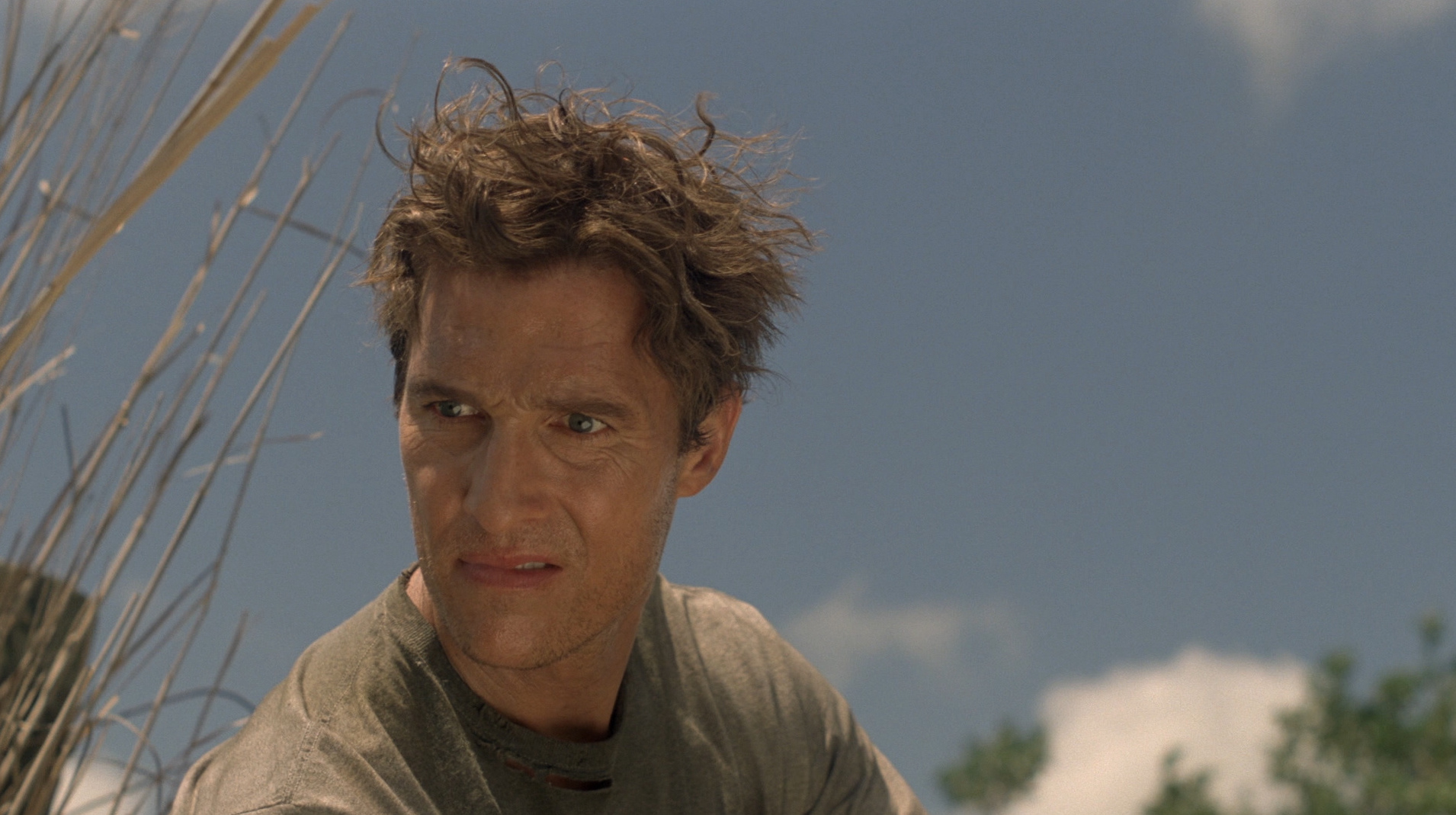
- Hellboy (2004) based on the DarkHorse comic book, Hellboy features a protagonist who wages war against evil forces who wish to destroy existence as we know it.
- Lovecraft: Fear of the Unknown (2008) is a 90-minute TV-movie biography of H. P. Lovecraft.
- The Cabin in the Woods (2012) five friends on a retreat in a remote cabin are assailed by malevolent forces over the course of one terrifying night.
- Dreams in the Witch House (2013) is a short film by director/writer Jerry Andrews in which the main character is tormented during one night in a house that is rumored to be haunted.
- John Dies at the End (2013) pits two bumbling college dropouts against an alien invasion that threatens to crush humanity.
- True Detective (2014 – 2019) an anthology HBO TV show that helped bring comsic horror to mainstream conciosuness.
Frequently Asked Questions
Who created cosmic horror?
Cosmic horror is also commonly referred to as Lovecraftian horror, and Eldritch horror.
What makes cosmic horror scary?
As author China Miéville wrote, “Lovecraft’s horror is not one of intrusion but of realization.” So, much of cosmic horror deals with the idea that what we understand about our world and the universe we exist within is merely a thin barrier to what is really out there. When we realize that everything we know is wrong, that’s where cosmic horror resides. This is why much of cosmic horror deals with sci-fi elements, because science tries to make sense of the unknown, and the unknown can be scary. Even scarier is coming to the realization that, as humans, we aren’t equipped to understand all there is to know.
Where do I start cosmic horror?
For outer-space sci-fi fans who like a bit of gore, start with Event Horizon (1997). For a mixture of religion and science in your cosmic horror, watch Prince of Darkness (1987). For stylish modern horror with weird, alien elements, start with either Color Our of Space (2019) or Annihilation (2018).
